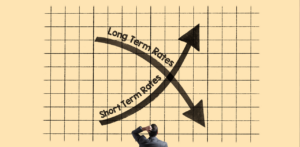The island reversal pattern is a powerful tool in technical analysis that can help traders identify potential trend reversals in the market. This price pattern, observed on bar charts or candlestick charts, suggests a reversal in the current trend. It is characterized by two different gaps that isolate a cluster of trading days, creating an “island” of price action.
Bearish reversals are more common with the island reversal pattern, but it can also be bullish. The key feature of this pattern is the presence of price gaps on both sides of the consolidation period, which are often not filled. Breakaway gaps and exhaustion gaps usually support island reversals. In some cases, the pattern extends into what is known as an island cluster reversal, where the gaps are on either side of a smaller period of price consolidation.
The psychology behind the island reversal pattern suggests a change in market sentiment. The pattern typically begins with increased trading volume, followed by a decrease as the consolidation period continues. To confirm the pattern, a stock should produce a price gap in the opposite direction after the consolidation period, accompanied by a surge in volume.
The Relative Strength Index (RSI) can be a useful indicator when identifying island cluster reversals. It helps determine the strength and momentum of price movements. Additionally, traders should pay attention to the size of the gaps and the strength of the initial trend before the pattern occurs. A larger initial downtrend and larger gaps increase the reliability of the pattern.
While island reversal patterns are rare, they should not be ignored. They can provide important trading signals and help traders anticipate potential trend reversals. By mastering this pattern and understanding its formation, traders can enhance their trading strategies and improve their chances of success in the market.
Key Takeaways:
- The island reversal pattern is a price pattern that suggests a reversal in the current trend.
- It is characterized by two price gaps that isolate a cluster of trading days, forming an “island” of price action.
- Bearish reversals are more common, but bullish island reversals can also occur.
- Breakaway gaps and exhaustion gaps often support island reversals.
- Island cluster reversals are an extension of the pattern, with gaps on either side of a smaller consolidation period.
Understanding the Island Reversal Pattern and its Formation
The island reversal pattern is characterized by the presence of price gaps that isolate a cluster of trading days, indicating a potential reversal in the current trend. It is a popular technical analysis pattern used by traders to identify market reversals and take advantage of potential trading opportunities. The pattern can be observed on bar charts or candlestick charts, where two different gaps isolate a group of trading periods.
The psychology behind the island reversal pattern suggests a change in market sentiment. At the start of the pattern, there is usually increased trading volume as investors react to the changing market conditions. As the consolidation process continues, trading volume tends to decrease. This indicates a phase of uncertainty and indecision in the market, as traders evaluate the future direction of the asset.
Island reversals are generally supported by breakaway gaps and exhaustion gaps. Breakaway gaps occur when the price gaps are in the opposite direction of the existing trend, signaling a potential trend reversal. Exhaustion gaps, on the other hand, occur after a significant price movement and indicate that the trend may be nearing its end.
Island Cluster Reversal
The island cluster reversal is an extension of the island reversal pattern. In this case, price gaps are observed on either side of a short period of price consolidation. The presence of these gaps further reinforces the potential reversal in the prevailing trend. Traders who spot this pattern often consider it as a strong signal to enter a trade.
When analyzing the island reversal pattern, traders often rely on additional indicators such as the Relative Strength Index (RSI) to confirm their findings. The RSI is a momentum oscillator that measures the speed and change of price movements. A divergence or a significant change in the RSI during the consolidation phase can further validate the potential reversal.
It’s important to note that island reversal patterns are relatively rare occurrences in the market. However, they should not be ignored as they can provide valuable insights into potential trading opportunities. By understanding the formation and characteristics of the pattern, traders can enhance their technical analysis skills and make better-informed trading decisions.
| Key Points: |
|---|
| The island reversal pattern is characterized by price gaps that isolate a cluster of trading days. |
| It indicates a potential reversal in the current trend. |
| Island reversals are supported by breakaway gaps and exhaustion gaps. |
| The island cluster reversal is an extension of the island reversal pattern. |
| Traders often use the Relative Strength Index (RSI) to confirm the pattern. |
| Island reversal patterns provide valuable trading signals. |
Trading Strategies for the Island Reversal Pattern
Successful trading of the island reversal pattern requires a well-defined strategy that incorporates the use of breakaway gaps, exhaustion gaps, and volume indicators. These key elements can help traders identify and confirm the pattern, providing valuable insights for making informed trading decisions.
Firstly, breakaway gaps play a crucial role in confirming the island reversal pattern. These gaps occur when a stock’s price breaks away from a trading range, indicating a shift in market sentiment. When identifying an island reversal pattern, look for a breakaway gap that occurs after a period of consolidation. This gap should be in the opposite direction of the preceding trend, signaling a potential reversal.
Secondly, exhaustion gaps can provide further confirmation of the island reversal pattern. These gaps occur when there is a significant increase in buying or selling pressure, leading to a gap in the price chart. In the context of the island reversal pattern, an exhaustion gap usually occurs after the consolidation period, confirming the potential reversal. Traders should watch for these gaps as they indicate a strong shift in market sentiment.
Volume indicators, such as the Relative Strength Index (RSI), can be valuable tools in identifying and confirming the island reversal pattern. The RSI measures the strength and speed of price movements and can help traders spot overbought or oversold conditions. When analyzing the island reversal pattern, look for increased volume at the start of the pattern, indicating a change in market sentiment. Additionally, a decrease in volume during the consolidation period can further support the potential reversal.
| Trading Strategies for the Island Reversal Pattern |
|---|
| 1. Identify breakaway gaps in the opposite direction of the preceding trend. |
| 2. Watch for exhaustion gaps after the consolidation period. |
| 3. Utilize volume indicators like the RSI to confirm the pattern. |
| 4. Consider the size and strength of the gaps for increased reliability. |
In conclusion, trading the island reversal pattern requires careful analysis and consideration of breakaway gaps, exhaustion gaps, and volume indicators. By incorporating these strategies, traders can increase their chances of identifying and capitalizing on potential reversals in the market. Remember, while island reversal patterns may be rare, they should not be ignored as they can provide valuable trading opportunities.
Conclusion
The island reversal pattern is a unique chart pattern that can provide valuable trading signals, and traders should not overlook its potential in their trading strategies. This pattern, which occurs when two different gaps isolate a cluster of trading days, suggests a reversal in the current trend.
Island reversals can be either bullish or bearish, although bearish reversals are more frequent. They are defined by price gaps on either side of a grouping of trading periods, indicating that the gaps will often not be filled. These patterns are typically supported by breakaway gaps and exhaustion gaps.
The psychology behind the island reversal pattern suggests a change in market sentiment. The pattern begins with increased volume and is followed by a fall in volume as the consolidation process continues. Traders can use the Relative Strength Index (RSI) as a useful indicator when identifying island cluster reversals.
To confirm the pattern, a stock should produce a price gap in the opposite direction after the consolidation period, accompanied by an increase in volume. The bullish island reversal is a pattern that occurs during a downtrend, where the price gaps down and then gaps back up into an uptrend, indicating a strong reversal. The pattern is more trustworthy if the initial downtrend is stronger and the two gaps are larger.
While island reversal patterns are rare, they should not be ignored as they can provide important trading signals. Traders who can master the art of identifying and trading this pattern have the potential to capitalize on significant market moves.
FAQ
What is the Island Reversal pattern?
The Island Reversal pattern is a price pattern on bar charts or candlestick charts that suggests a reversal in the current trend. It occurs when two different gaps isolate a cluster of trading days.
Are Island Reversals more commonly bullish or bearish?
Bearish reversals are more frequent with Island Reversal patterns, although they can be bullish as well.
How are Island Reversals defined?
Island reversals are defined by price gaps on either side of a grouping of trading periods and are based on the idea that the gaps will often not be filled.
What are breakaway gaps and exhaustion gaps?
Breakaway gaps and exhaustion gaps are price gaps that often support island reversals. Breakaway gaps occur at the start of the pattern with increased volume, while exhaustion gaps occur after the consolidation period with a fall in volume.
What is the Island Cluster Reversal?
The Island Cluster Reversal is an extension of the Island Reversal pattern, where price gaps are on either side of a small period of price consolidation.
How can the Relative Strength Index (RSI) be useful in identifying island cluster reversals?
The RSI can be a useful indicator when identifying island cluster reversals, as it can confirm the pattern.
What confirms the Island Reversal pattern?
To confirm the pattern, a stock should produce a price gap in the opposite direction after the consolidation period, accompanied by an increase in volume.
What is the Bullish Island Reversal pattern?
The Bullish Island Reversal is a pattern that occurs during a downtrend, where the price gaps down and then gaps back up into an uptrend, indicating a strong reversal.
Are Island Reversal patterns rare?
Yes, Island Reversal patterns are rare, but they should not be ignored as they can provide important trading signals.








